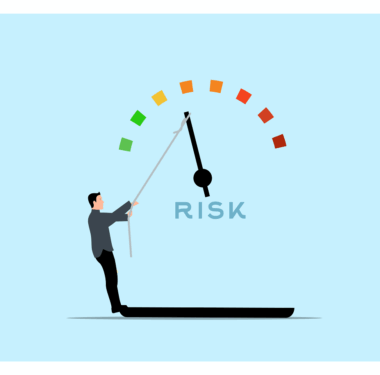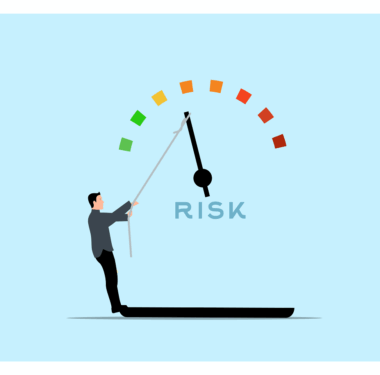Digital Transformation and Its Effects on Supply Chain Risk Management
In recent times, digital transformation has reshaped various sectors, including supply chain management. The integration of advanced technologies such as big data, artificial intelligence, and blockchain is revolutionizing risk management strategies within supply chains. By leveraging real-time data, companies can predict potential disruptions and adjust strategies accordingly. This proactive approach enhances overall supply chain resilience while minimizing risks. Consequently, organizations can respond faster to fluctuations, thereby maintaining operational efficiency. Additionally, technology enables better visibility throughout the supply chain, allowing stakeholders to monitor processes seamlessly. Embracing digital tools also fosters collaboration among different supply chain partners. When combined, these benefits not only reduce risk exposure but also improve financial performance. Thus, businesses must embrace this digital shift to thrive in a competitive marketplace. Overall, the impact of digital transformation on supply chain risk management is significant, leading to better decision-making and enhanced operational agility. Companies should prioritize innovation to stay ahead of potential challenges and adapt to an ever-changing landscape.
The importance of digital transformation in supply chain risk management cannot be overstated. As companies evolve, the need for improved transparency, communication, and efficiency becomes paramount. Digital tools streamline workflows and ensure timely information sharing among stakeholders. Electronic data interchange systems facilitate instant access to crucial data points, thus enabling informed decision-making. Additionally, enhanced analytics capabilities allow organizations to assess risks proactively, pinpoint vulnerabilities, and implement countermeasures swiftly. These capabilities also support continuous monitoring, making it easier to identify emerging risks before they escalate, which is essential in today’s uncertain global environment. Moreover, digital transformation encourages the adoption of risk diversification strategies, enabling businesses to mitigate potential threats. By diversifying their supplier base and logistics networks, companies can shield themselves from local disruptions. Risk-averse companies are more likely to thrive as they adapt to changing market dynamics. In conclusion, utilizing digital solutions in supply chain risk management empowers organizations to anticipate challenges effectively and respond proactively, fostering a culture of resilience that ultimately leads to sustained business growth.
Technological Innovations Driving Risk Management
Various technological innovations are instrumental in enhancing supply chain risk management. For instance, artificial intelligence (AI) can analyze vast data sets, enabling organizations to identify trends and anomalies that indicate potential risks. Moreover, machine learning algorithms can continuously improve predictive models, thereby refining risk assessments over time. Furthermore, blockchain technology increases transparency by securely documenting each transaction within the supply chain. This minimizes the potential for fraud and allows for more accurate tracking of goods. By employing these technologies, companies achieve a deeper understanding of their supply chain landscapes and can better anticipate disruptions. IoT devices also contribute by providing real-time data on shipment conditions and locations. This ensures that stakeholders can react quickly to unexpected developments, such as delays or quality issues. Supply chain managers can prioritize risks based on their potential impact and likelihood, allowing for more effective resource allocation. By embracing these innovations, organizations not only enhance their risk management capabilities but also foster greater trust among partners. In doing so, they pave the way for sustainable supply chain practices.
Data analytics has emerged as a crucial component of modern supply chain risk management. Companies can utilize advanced analytics to derive meaningful insights from data collected throughout the supply chain. By employing statistical tools and predictive modeling, businesses can uncover potential vulnerabilities. These insights allow for more sound decision-making, particularly when addressing uncertainties. Furthermore, organizations can assess supplier performance more accurately and gauge their reliability in times of crisis. The focus on data-driven risk management fosters an adaptive culture, empowering teams to make smarter choices. Predictive analytics also enhances scenario planning, allowing organizations to model various outcomes based on different risk factors. This capability enables them to devise contingency plans effectively and maintain supply chain continuity. As data analytics continues to grow, companies that invest in these technologies will gain a competitive edge. Embracing this data-driven approach fosters resilience, propelling businesses toward sustainable success. Investing in analytics tools fosters a culture of continuous improvement and enhances overall supply chain agility. Ultimately, organizations leveraging these techniques are better positioned to navigate the complexities of modern supply chains.
Collaboration and Transparency in Risk Management
The importance of collaboration among supply chain partners cannot be underestimated. When stakeholders actively communicate, they can address potential risks effectively and establish shared objectives. For example, collaborative platforms enable real-time sharing of insights, data, and best practices across the supply chain. This transparency fosters trust among partners and encourages collective initiatives to mitigate risks. Moreover, stronger relationships enable organizations to react faster during disruptions, emphasizing the value of a united front. Physical and technological barriers have been reduced through digital transformation, allowing seamless communication across different partners. Increased collaboration can lead to joint risk assessments, where stakeholders identify vulnerabilities collectively and determine appropriate strategies. Furthermore, employing shared risk management frameworks provides a structured approach to addressing challenges. Through regular meetings and information sharing, partners can align their efforts and enhance resilience. Ultimately, collaboration fosters a proactive risk management culture, wherein each party contributes to the overall success of the supply chain. By valuing transparent communication, organizations ensure they are better prepared for unforeseen events.
Cybersecurity poses a significant risk in the context of digital transformation in supply chains. As businesses become increasingly reliant on digital solutions, the potential threats from cyberattacks escalate. Organizations must prioritize cybersecurity measures to safeguard their operations and sensitive data. Implementing robust security protocols, such as encryption and multi-factor authentication, can help mitigate risks associated with data breaches. Moreover, training employees on cybersecurity best practices is vital in creating a culture of awareness. Regular assessments of security infrastructure can also identify vulnerabilities and inform necessary improvements. Additionally, organizations should develop incident response plans to address potential breaches effectively. By establishing clear protocols, companies can minimize downtime and maintain business continuity in case of a cyber incident. Collaborating with cybersecurity experts can further enhance defense strategies. Ensuring compliance with industry standards, such as GDPR or CCPA, also builds customer trust and protects organizational reputations. Ultimately, embracing comprehensive cybersecurity measures within digitalized supply chains fortifies risk management and sustains business integrity. Companies that prioritize cybersecurity will enjoy greater confidence in their operations and partnerships.
The Future of Supply Chain Risk Management
The future of supply chain risk management will be shaped by ongoing advancements in technology and methodologies. Businesses must be prepared to adapt to emerging trends to stay competitive. Innovations, such as artificial intelligence and machine learning, will play pivotal roles in predicting risks more accurately. As new tools and techniques evolve, organizations must invest in developing workforce skills to harness these technologies effectively. Furthermore, the integration of sustainability in risk management approaches is gaining traction, driven by increasing consumer demands for ethical practices. Companies will incorporate sustainability considerations into their risk assessments, adding a new layer of complexity. These efforts will contribute to building more resilient supply chains that prioritize both economic and environmental factors. Additionally, global events, such as pandemics and geopolitical shifts, will necessitate ongoing reassessment of supply chain strategies. By maintaining agility and flexibility, organizations can navigate uncertainties and emerge stronger. In summary, the future of supply chain risk management lies in embracing innovation and adapting to changing circumstances while fostering collaboration among partners.
In conclusion, digital transformation significantly impacts supply chain risk management by enhancing visibility, collaboration, and responsiveness. Advanced technologies empower organizations to predict risks more effectively and develop proactive strategies to address potential disruptions. The integration of data analytics and cybersecurity measures ensures that businesses can navigate the complexities of today’s supply chains with confidence. As the landscape continues to evolve, companies must prioritize innovation and resilience. Embracing technological advancements while cultivating a culture centered around collaboration positions organizations to tackle challenges successfully. Ultimately, those that invest in their supply chain risk management capabilities will secure a competitive advantage, ensuring long-term growth and operational efficiency. By focusing on these key aspects, companies can establish a strong foundation for navigating future uncertainties. The journey towards digitalization must be strategic and deliberate, considering both immediate benefits and long-term repercussions. Therefore, businesses should continuously reassess their risk management frameworks and adapt them to align with market dynamics. In doing so, they will not only mitigate risks but also capitalize on growth opportunities that arise from evolving supply chain trends. A proactive approach is essential for sustaining competitive advantage in an increasingly digital world.





